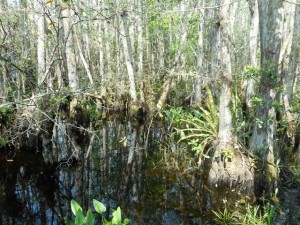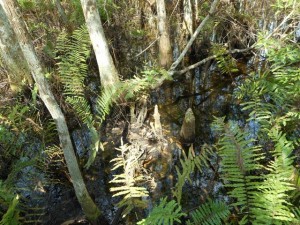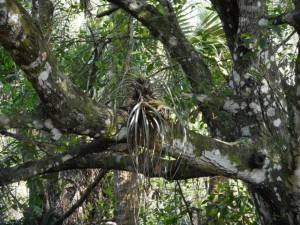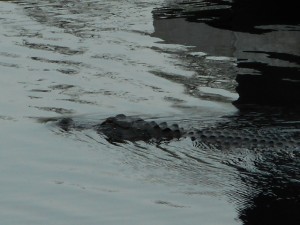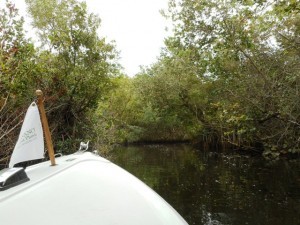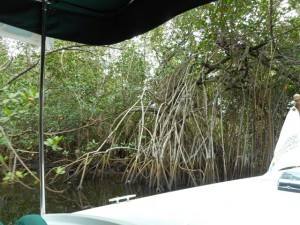SWAMP & STREAM
Susan Vaughan here. I know, my title’s a bad takeoff on Field & Stream. My post today is a nature travelogue of my recent week in southwest Florida. With my husband and other family members, I visited two nature conservancy centers that were reminders both of human’s adverse effects on the environment and of the human efforts to save it. Attacks on the environment, whether purposeful or inadvertent, happen everywhere, but these tours also nudged me to compare Maine and Florida.
In Maine, we’re concerned about our old growth forests. In Florida, cypress trees are endangered. The Corkscrew Swamp Sanctuary in Naples was established to protect the largest remaining stand of bald cypress left in North America.
When acquired in 1954, in cooperation with the Audubon Society, the swamp was isolated and almost impossible to access. Today the sanctuary preserves native plants, native animals, and the cypress. We walked the boardwalk that winds its way through and around the swamp. Bald cypress once dominated the deep swamps of Florida and the Southeastern U.S. They lose their needles during the winter, hence the name “bald.” Scientists used to think that cypress “knees,” the knobby growth in the water, both stabilizes and feeds the parent tree, but they have since learned the knees are only for stabilization.
Some of the cypress are hundreds of years old. I have to rely on memory, but I believe the oldest is the Muir Tree, over 500 years old and too large for a photo to do justice. There are twelve species of air plants in the swamp. Related to the pineapple, they’re not parasites, but take their nutrients from the rainfall and falling organic debris.
Water fern floats and can cover large expanses of the water’s surface. Blue flag irises are found in Maine, and we found many in the sunnier parts of the swamp. Some creatures there also live in Maine, a pileated woodpecker and a raccoon. Not so the snowy egret happily munching greens as we passed by. We were told that people occasionally spot alligators and Florida panthers.
Florida panthers are tawny like cougars, but smaller. No panther for us, but the next day, a woman from Wisconsin videoed a panther running along the boardwalk. I’d have been so shocked, I couldn’t have held the camera, but she didn’t even shake the camera. You can see the news coverage here. Instead, here’s the alligator we saw.
Our other nature tour was to the Conservancy of Southwest Florida Nature Center, also in Naples. Their motto could apply to Maine as well: “Our Water, Land, Wildlife, Future.” Their work and fundraising protects and educates about all of those areas. We toured the nature center and then boarded their electric tour boat for a ride through the lagoon and on the small Gordon River.
In this location, the endangered trees were mangroves. Our guide wasn’t as specific as the NOAA website, which tells me that mangrove trees grow in tropical and sub-tropical areas with low-oxygen soil, where slow-moving waters allow fine sediments to accumulate.
Their dense “prop” roots make the trees appear to be standing on stilts above the water. This tangle allows the trees to handle the daily rise and fall of tides. They stabilize shorelines, whether on the coast or here on this river, maintain water quality and clarity, and filter pollutants and sediments.
Mangroves are homes to shrimp, crustaceans, mollusks, and fish. They also support nesting birds and larger animals like alligators and turtles. Along the river, our guide pointed out a pair of nesting yellow-crowned night herons, but the boat passed too quickly for me to snap their picture. You’ll have to look it up in your birding book.
And big doings coming next week. April 10-16, National Library Week, the Maine Crime Writers are planning some special fun. And at the end of the month, one lucky commenter will win a gift basket with Maine treats and Maine reads.

